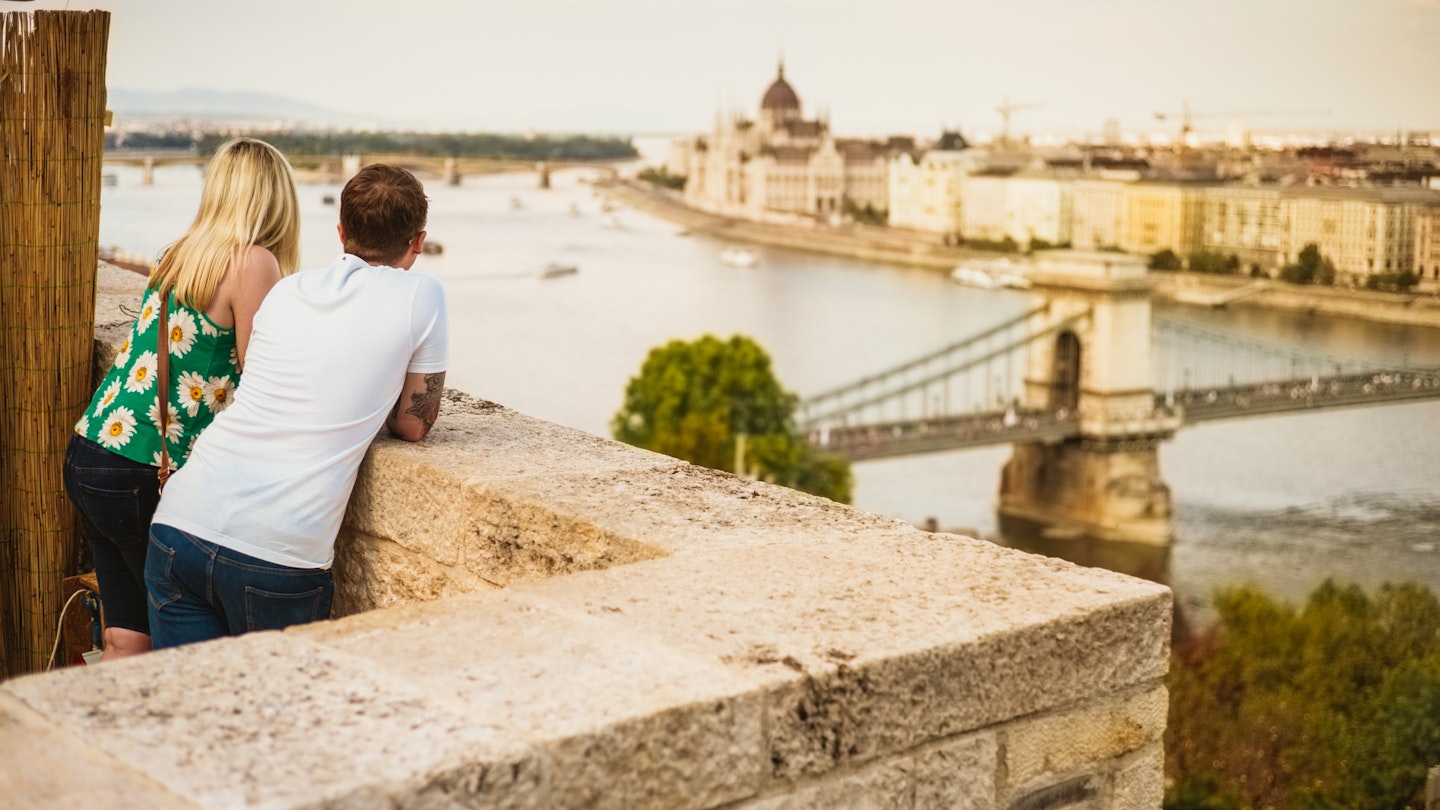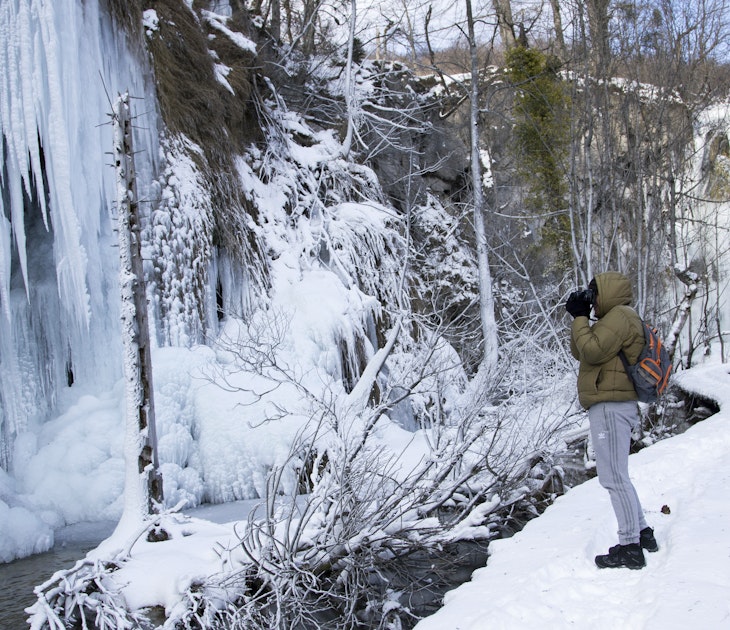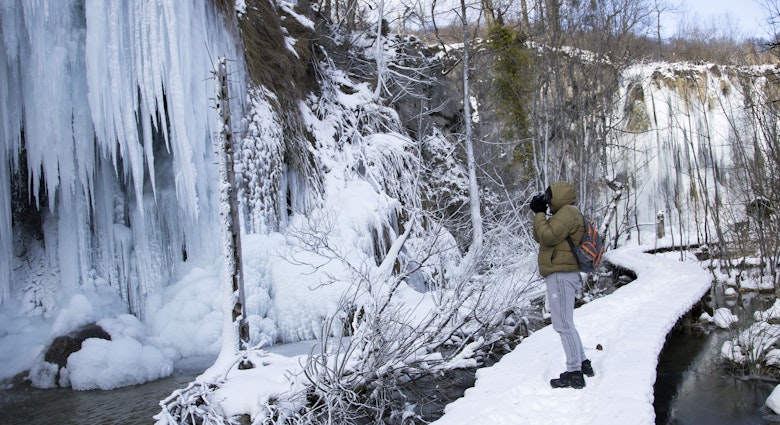You could easily spend a year in Budapest and barely scratch its surface, but this dynamic Central European metropolis is only one jewel in the crown that is Hungary. The city is a gilded symbol of Hungary’s proud history, architectural prowess, and unique identity, but there’s even more to see and experience beyond the capital.
No matter what kind of excursion you’re looking for, you can find it both within and beyond the city limits. Here’s some of our favorite experiences:

Best for Wellness and Rejuvenation
Wellness and rejuvenation literally come with the territory in Hungary, which sits atop a reservoir of thermal springs flowing into almost every town and region. More than 100 of these mineral-rich springs can be found in Budapest alone, where they deliver medicinal waters to bathhouses and spas such as the stunning Ottoman-era Veli Bej Baths, the Rudas Baths, and of course the iconic Széchenyi Baths.
Venture beyond the capital and you’ll experience thermal therapy with a more traditional twist. Nyíregyháza, an endearing spa town with a quaint, creative spirit, is the perfect launching point for explorations into the northeastern region of Szabolcs-Szatmár-Bereg. Here, wellness and culture meet in a warm embrace amid the heart of Hungarian folk arts.
Embroidered cloth adorns shop windows and traditional music and dance reverberate through the pedestrianized center of Nyíregyháza. For a taste of 19th-century village nostalgia, take a walk through the highly educational (and fun) Sóstó Open Air Museum, then visit the Sóstógyógyfürdő bath complex where a restorative soak in the medicinal thermal waters might just turn back your biological clock. For a taste of adventure, kids can slip and slide their way through the nearby water park.
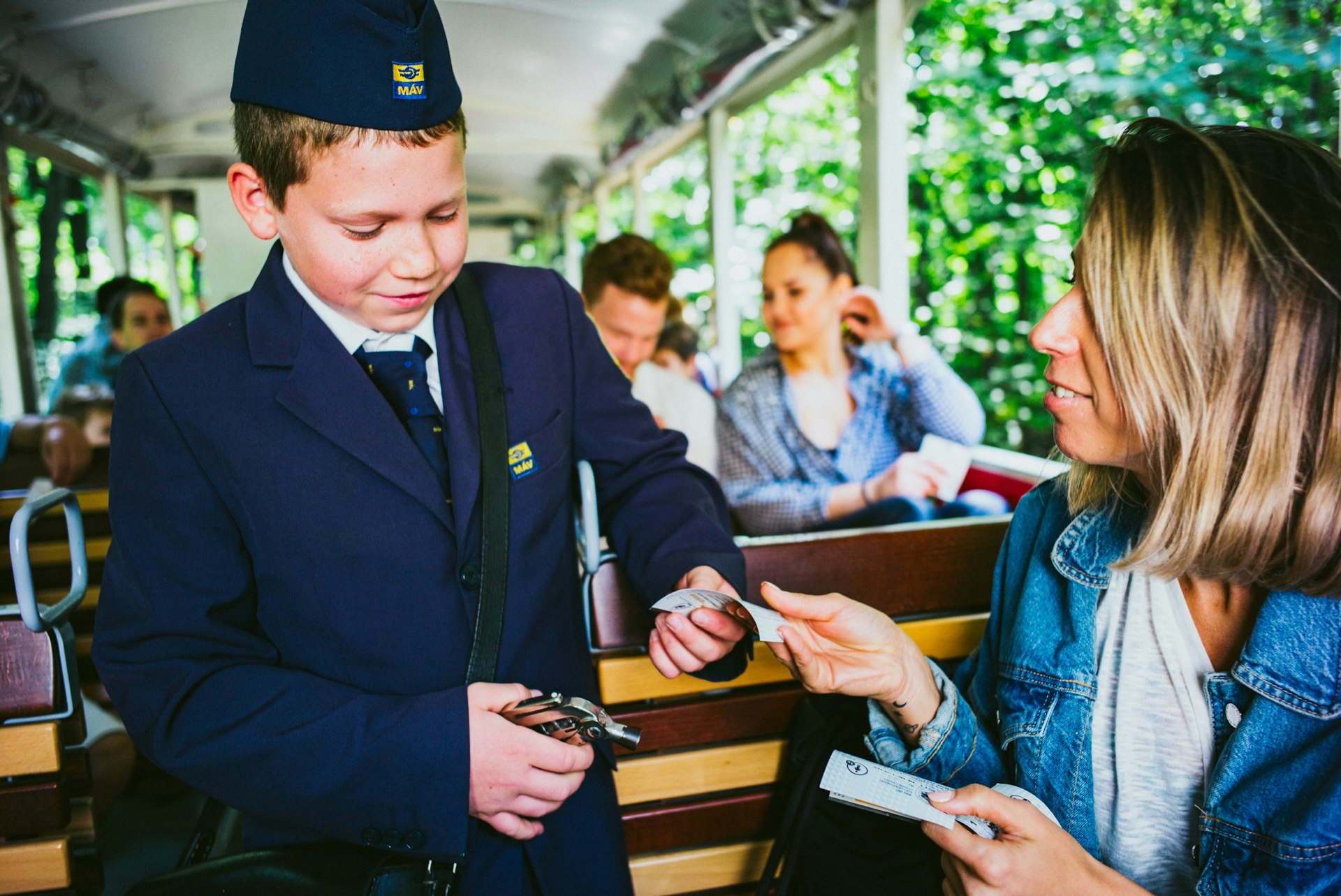
Best for Families
Speaking of the little ones, just a few miles from Nyíregyháza and set inside a 75-acre (almost untouched) oak forest is Nyíregyháza Zoo. This award-winning zoo is home to more than 5,000 animals from all over the world, including endemic species such as bear and bison and more exotic species such as Sumatran tigers, Komodo dragons and Indian rhinos. The complex is also home to an oceanarium and activities and exhibits for kids.
Closer to Budapest, the Children’s Railway is a great way for families to spend a half-day. This narrow-gauge railway spans seven miles, chugging along a serpentine route through the rolling Buda Hills from Széchenyihegy to Hűvösvölgy. It passes through the forested wilds and picnic grounds of Normafa and even stops at Jánoshegy – the highest point in Budapest at 1729ft. Except for the driver the show is run exclusively by school-aged conductors between 10 and 14-years-old, making for a unique experience the entire family will enjoy in any season.

Best for Adventurers
For a more grown up excursion, the mighty Lake Balaton is well worth the two-hour train ride southwest from Budapest. You’d be forgiven for thinking you’ve somehow hit the Mediterranean coastline once Central Europe’s largest freshwater lake rolls into view – it is that big. But while you can easily spend a weekend or a week relaxing on its lapping shores, Balaton is also ripe for adventure.
One of the best ways to explore this breathtakingly beautiful body of water is on two wheels. If you’re fit enough, it’s possible to cycle around the lake in a single day. But it’s far better to spread the 130-mile route over several days (three to five at least), unravelling the mostly flat, rural landscape at a pace where you can enjoy all it has to offer.
Along the way you’ll see the vineyards that produce Hungary’s finest wines – including Szászi Vineyard and Petrányi Winery – historic lakeside towns, and, of course, the Tihany Peninsula with its Instagram-worthy lavender fields, famous abbey and thatched-roof dwellings. The clearly marked route known as Balatoni körút features dedicated bike paths and quiet country roads, and plenty of places to fuel up with carb-heavy Hungarian specialties such as langos.
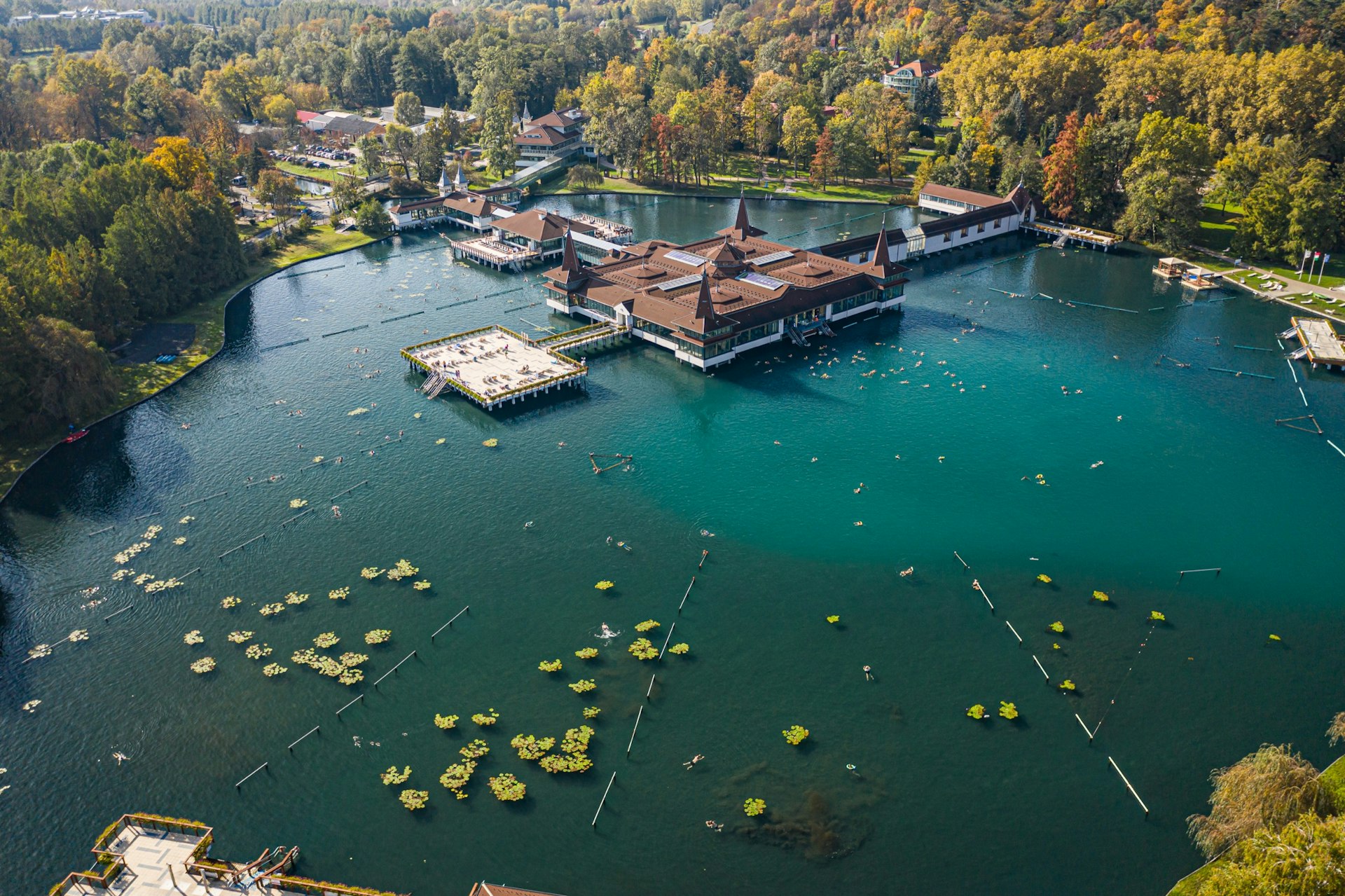
Lake Balaton also features dozens of hiking trails, from easy day hikes to multi-day explorations. With its towering pine forests, ancient ruins and geyser cones, the wild and rugged geological wonderland of Tihany Peninsula is the perfect spot to go trekking. Look for the Echo Trail, which can be done in a day and in any season.
For a look at Hungary’s fascinating geological and biological diversity, the Badacsony area on the lake’s northern shore is equally stunning. Forested trails run past petrified basalt columns and unique flora and fauna, reaching their climax at lookout points over a patchwork of verdant vineyards such as Csendes Dűlő Wine Estate. Protruding from the horizon, the 1,300-foot massif that gives the region its name is a reminder of Hungary’s volcanic past. There are several restaurants and bars en route where you can try a couple of glasses of the region’s excellent dry white wines for yourself, such as Laposa Birtok.
At the western edge of the lake, close to the historic town of Keszthely and its gorgeous Baroque-style Festetics Palace, lies Hévíz – famous for its curative thermal lake (the world’s second-largest) and an array of health and rejuvenation services. Relax away the bumps from the road with massages, scrubs and other thermal remedies.

Best for Foodies
Speaking of wine, Tokaj in Northern Hungary is famous all over the world for its sweet dessert vino. With an undulating landscape in the foothills of the Zemplén Mountains, this romantic region enjoys a unique microclimate, giving its grapes its distinctively delectable taste.
The area was recognized as a World Heritage Site in 2002 for its role in viticulture history and winery-hopping is undoubtedly the thing to do here. Once back within the city limits of Tokaj, make a beeline for the main square and try some traditional Hungarian fare such as goulash at Bacchus or some fish soup (halászlé) at the rustic eatery Bonchidai Csárda overlooking the Tisza River.
If reds are more to your taste, take a 30-minute drive from Hungary’s fifth-largest city, Pécs, to the fertile wine-growing region of Villány. With a warmer, more Mediterranean climate than other parts of the country, this southern region close to the Croatian border is famous for its red varieties, including pinot noirs, cabernet sauvignons and velvety merlots. One of Hungary’s most distinguished wineries, Bock, is based here, as is the quality-obsessed gourmet restaurant Sauska 48. Its magnificent terrace overlooks landscaped vineyards, best appreciated around sunset. If possible, time your visit to Villány in August for the annual arts festival of Ördögkatlan.

Continue your gastronomic journey back in Pécs at some of the city’s finest foodie haunts. Founded by the Romans and later occupied by the Ottoman Empire, this charming city has a fascinating multicultural history evident in the architectural splendor of its many museums, ruins, theaters and monuments. This feast for the eyes is equaled only by a deliciously diverse culinary scene, incorporating elements and flavors from its storied and multi-ethnic history.
Pécs is the capital of Baranya county, a region known for its delicious fish soup. The city also is home to exceptional Balkan eateries from Blöff Bisztró to the innovative Zsolnay Restaurant inside the historic Zsolnay Cultural Quarter. Finish your culinary tour at one of Hungary’s oldest confectioneries, Caflisch, which opened in 1789. It’s the perfect way to cap off your visit to a side of Hungary many visitors never experience.
